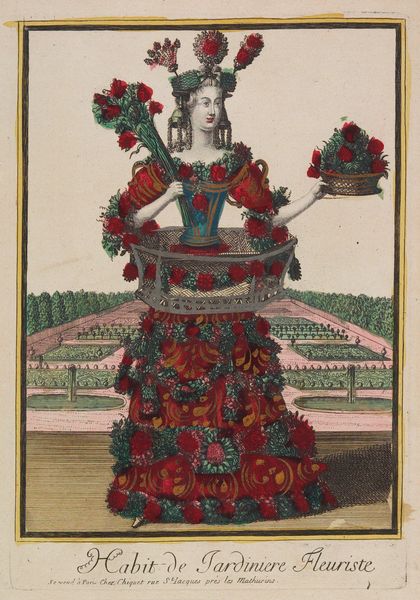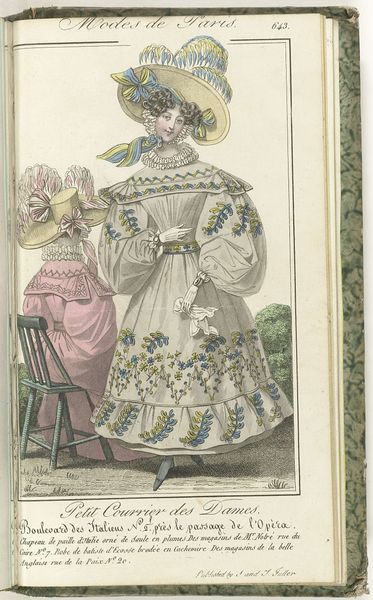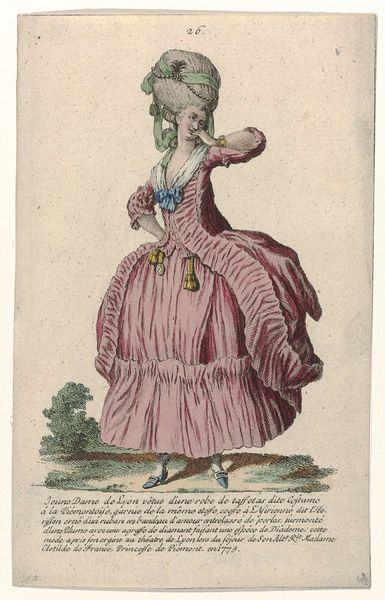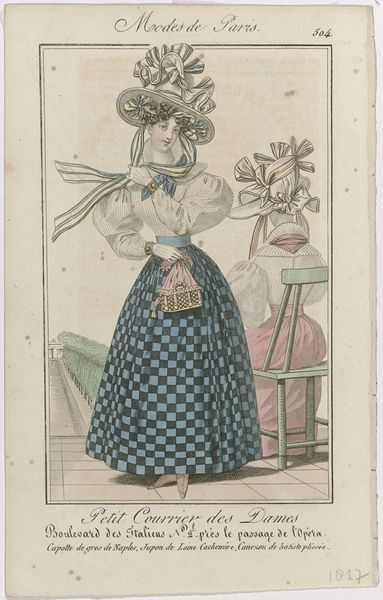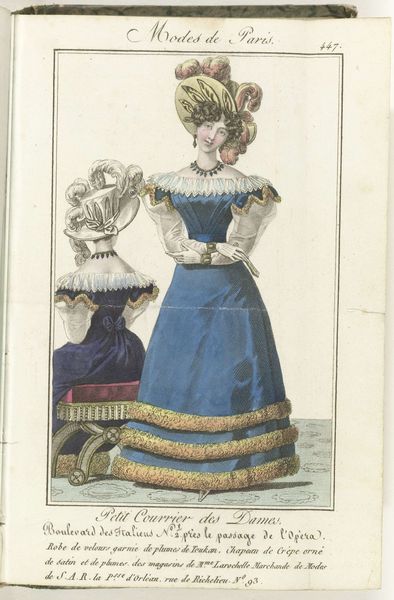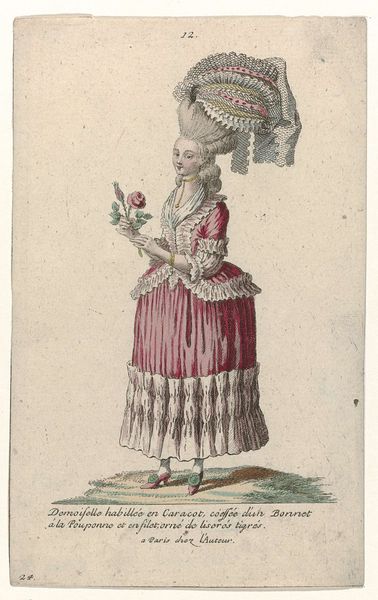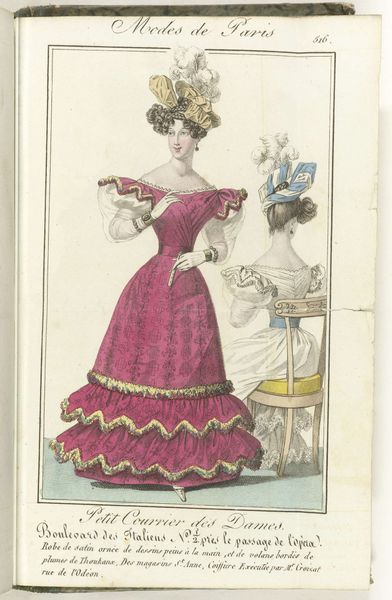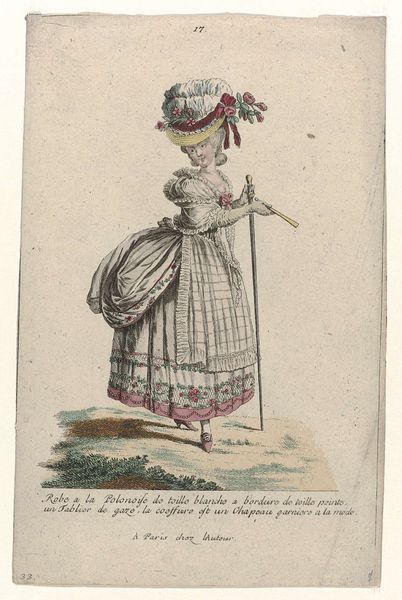
graphic-art, print, engraving
portrait
graphic-art
germany
coloured pencil
genre-painting
engraving
rococo
Dimensions 10 1/2 x 7 1/2 in. (26.67 x 19.05 cm) (image)12 3/4 x 7 in. (32.39 x 17.78 cm) (plate)17 x 8 3/4 in. (43.18 x 22.23 cm) (sheet)19 3/4 x 15 3/4 x 1 1/8 in. (50.17 x 40.01 x 2.86 cm) (outer frame)
Curator: So, Editor, what strikes you about Engelbrecht’s “Flower Gardener” from around 1730? Editor: Well, it’s definitely eye-catching. The sheer amount of flowers, practically bursting off the print, is overwhelming! She almost seems consumed by the materials of her trade. It’s a colored engraving; what's your take on it? Curator: It’s intriguing how Engelbrecht uses printmaking – traditionally a means of mass production – to depict something as ephemeral and cultivated as flowers. Consider the labor involved: the initial engraving, the hand-coloring, each stage requiring skilled craftspeople. This tension between mechanical reproduction and natural beauty is fascinating. Do you think the abundance of flowers glorifies or perhaps obscures the actual labor involved in gardening and the print's making? Editor: That's a really interesting point. The detail definitely feels celebratory, highlighting nature’s bounty and artistry, but glossing over the more laborious and perhaps exploitative side. Curator: Exactly. And notice how the flowers adorn her clothing, blurring the lines between the organic and the constructed. Is she presenting the raw material or a processed, stylized version of nature ready for consumption? It’s less a portrait of a gardener and more a commentary on the packaging and commodification of the natural world for consumption in the Rococo period. Editor: I never thought about it that way! So it's about the production, presentation, and consumption… even fashion is part of it! Curator: Precisely! The artist’s focus extends past aesthetics; the engraving invites us to reflect on material culture and the complex processes that bring seemingly simple objects into our lives. Now, has our conversation changed how you appreciate it? Editor: Definitely. I am more aware of how much an image from so long ago can reflect today's concerns. It really brings a new appreciation for all the hands and steps needed for art.
Comments
No comments
Be the first to comment and join the conversation on the ultimate creative platform.
